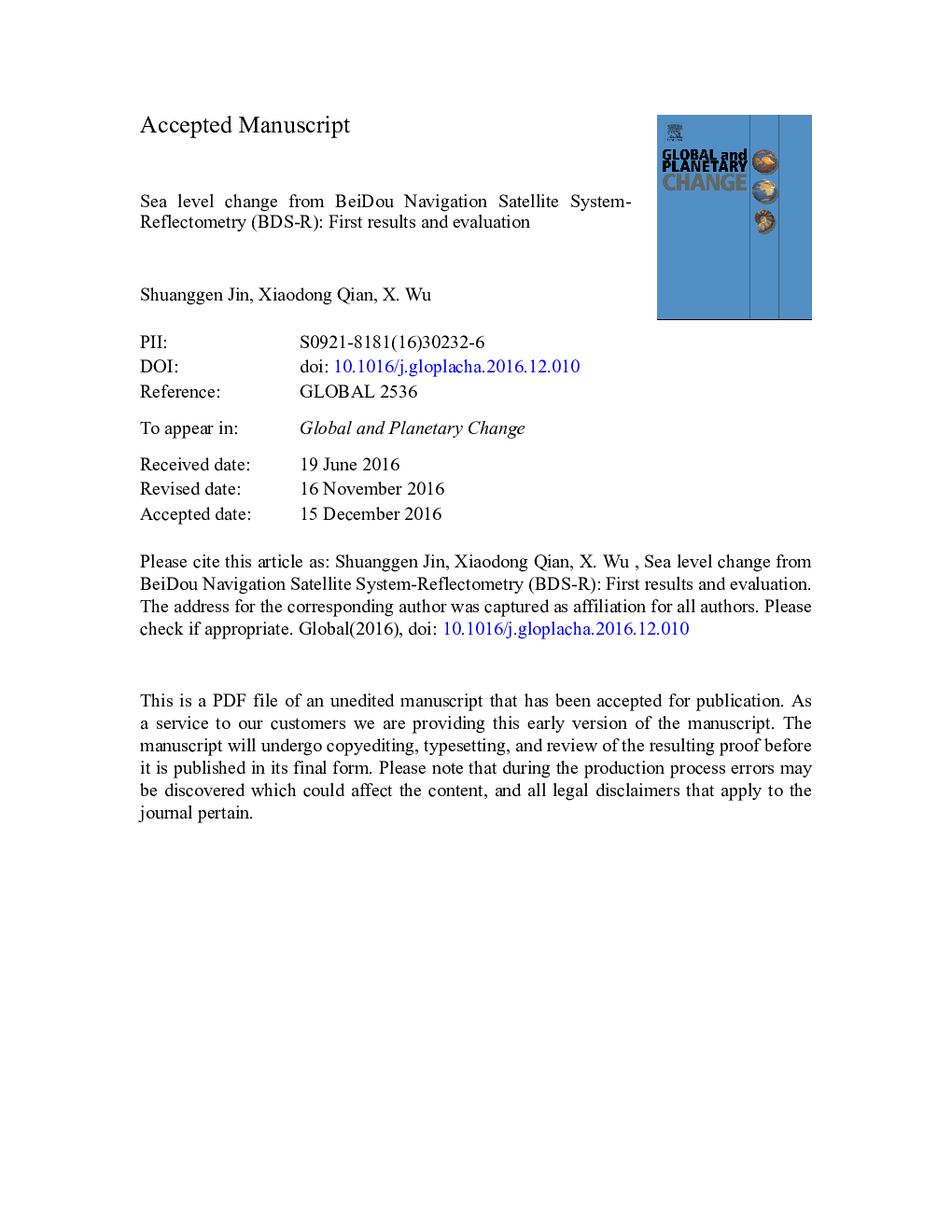| Article ID | Journal | Published Year | Pages | File Type |
|---|---|---|---|---|
| 5755292 | Global and Planetary Change | 2017 | 24 Pages |
Abstract
Sea level changes affect human living environments, particularly ocean coasts. The tide gauges (TG) can measure sea level change, while it is the relative variations with respect to the land. Recently, GPS-Reflectometry (GPS-R) has been demonstrated to measure sea level change as an altimetry. With the rapid development of China's BeiDou Navigation Satellite System (BDS), it may provide a new possible opportunity to monitor sea level changes with three frequencies (L2, L6 and L7). In this paper, BDS-Reflectometry (BDS-R) is the first time used to estimate the sea level changes based on Signal-to-Noise Ratio (SNR) data and triple-frequency phase and code combinations, which are compared to tide gauge observations. Results show that sea level changes from BDS SNR and phase combination have a good agreement with correlation coefficients of 0.83-0.91 and RMSEs of less than 0.6Â m, while BDS code combination is not as good as others. Furthermore, a new negative linear model between phase and code peak frequencies and tide gauge observations is further obtained and analyzed, which improves the results from three-frequency phase and code combinations with the RMSE of about 10Â cm and 18Â cm.
Keywords
Related Topics
Physical Sciences and Engineering
Earth and Planetary Sciences
Earth-Surface Processes
Authors
Shuanggen Jin, Xiaodong Qian, X. Wu,
